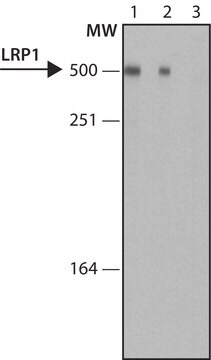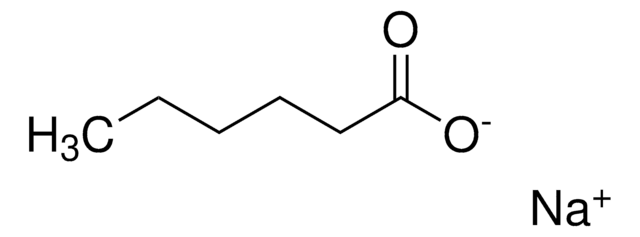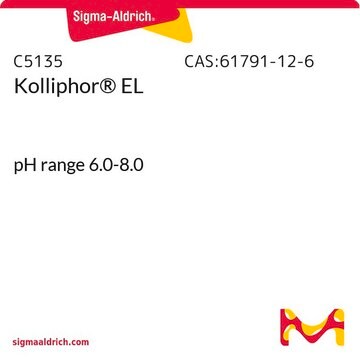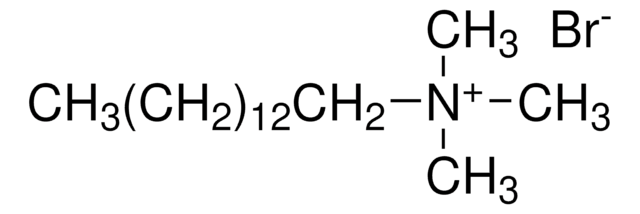L9755
Sodium dodecanoate
99-100%
Sinónimos:
Dodecanoic acid sodium salt, Lauric acid sodium salt, Sodium laurate
About This Item
Productos recomendados
origen biológico
synthetic
Nivel de calidad
Análisis
99-100%
formulario
powder
grupo funcional
ester
tipo de lípido
saturated FAs
Condiciones de envío
ambient
temp. de almacenamiento
room temp
cadena SMILES
[Na+].CCCCCCCCCCCC([O-])=O
InChI
1S/C12H24O2.Na/c1-2-3-4-5-6-7-8-9-10-11-12(13)14;/h2-11H2,1H3,(H,13,14);/q;+1/p-1
Clave InChI
BTURAGWYSMTVOW-UHFFFAOYSA-M
¿Está buscando productos similares? Visita Guía de comparación de productos
Categorías relacionadas
Aplicación
Palabra de señalización
Danger
Frases de peligro
Consejos de prudencia
Clasificaciones de peligro
Eye Dam. 1 - Skin Irrit. 2 - STOT SE 3
Órganos de actuación
Respiratory system
Código de clase de almacenamiento
11 - Combustible Solids
Clase de riesgo para el agua (WGK)
WGK 1
Punto de inflamabilidad (°F)
Not applicable
Punto de inflamabilidad (°C)
Not applicable
Equipo de protección personal
dust mask type N95 (US), Eyeshields, Faceshields, Gloves
Certificados de análisis (COA)
Busque Certificados de análisis (COA) introduciendo el número de lote del producto. Los números de lote se encuentran en la etiqueta del producto después de las palabras «Lot» o «Batch»
¿Ya tiene este producto?
Encuentre la documentación para los productos que ha comprado recientemente en la Biblioteca de documentos.
Los clientes también vieron
Nuestro equipo de científicos tiene experiencia en todas las áreas de investigación: Ciencias de la vida, Ciencia de los materiales, Síntesis química, Cromatografía, Analítica y muchas otras.
Póngase en contacto con el Servicio técnico













